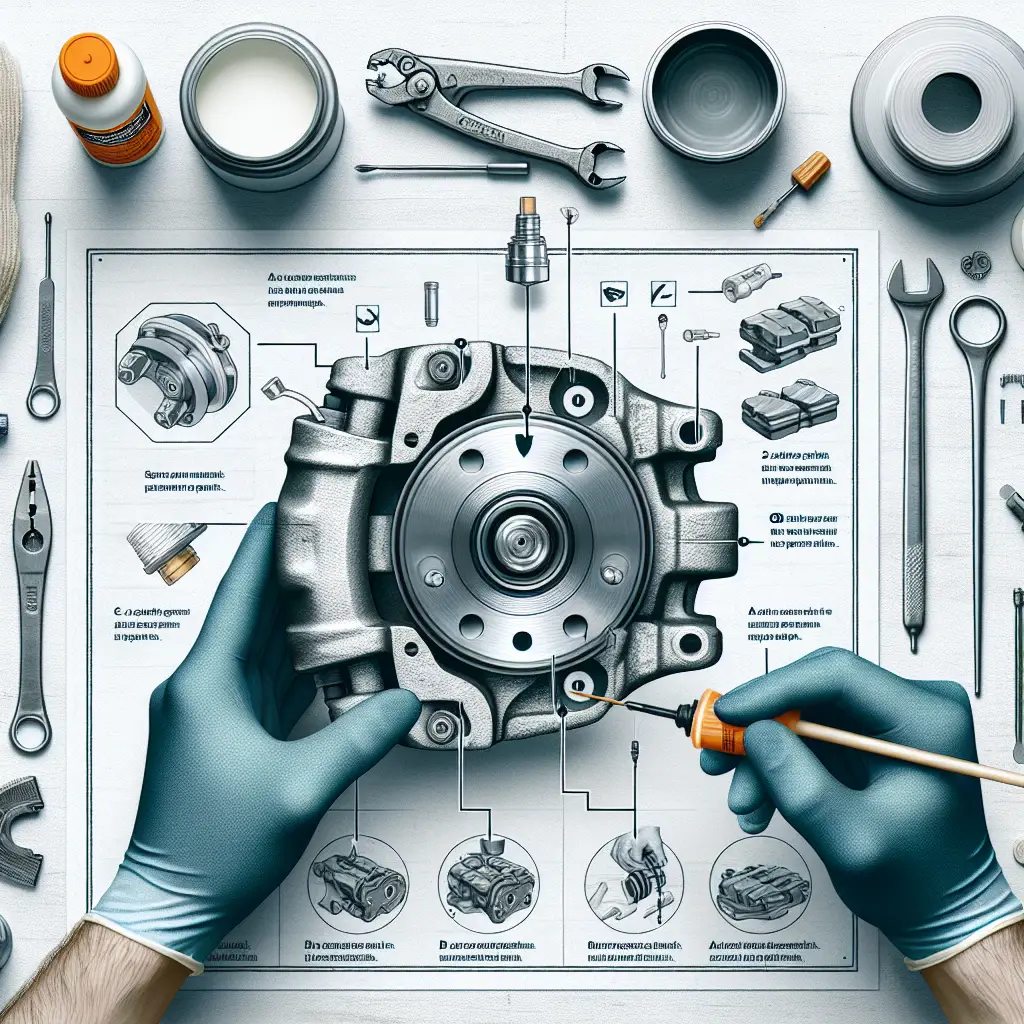How to Lubricate Brake Caliper Pistons: A Step-by-Step Guide
When it comes to vehicle maintenance, ensuring your brakes are functioning correctly should be at the top of your checklist. An essential part of this system is the brake caliper piston, which, when well-lubricated, can save you from uneven brake pad wear and potentially hazardous brake performance. In this comprehensive guide, I’ll walk you through the essentials of lubricating your brake caliper piston, ensuring your safety and extending the life of your brake components.
Why Lubrication is Crucial for Brake Caliper Pistons
Before delving into the lubrication process, it’s essential to understand the vital role that brake caliper pistons play in your vehicle’s braking system. These pistons compress the brake pads against the rotors to create the friction that allows your vehicle to slow down or stop. If these pistons are not lubricated, they can seize or create uneven pressure on the pads, leading to potential brake failure or costly repairs.
When to Lubricate Brake Caliper Pistons
It’s generally advisable to lubricate the caliper pistons during a brake pad replacement or when any brake work that involves caliper removal is performed. According to experts, regular inspection and maintenance of the brake system should occur at least once a year or as per your vehicle manufacturer’s recommendation.
Tools and Materials Needed
- High-temperature brake caliper grease
- Gloves and safety glasses
- Brake cleaner
- Ratchet and socket set
- Brake caliper piston tool or C-clamp
- Shop rags or towels
Make sure to use a high-quality brake caliper grease that can withstand high temperatures without breaking down or causing the caliper components to stick.
Step 1: Preparing Your Work Area
Safety first – ensure your car is parked on a level surface with the parking brake engaged. Jack up the vehicle and secure it on jack stands, and then remove the wheel to access the brake caliper.
Step 2: Removing the Brake Caliper
Use your ratchet and socket set to loosen and remove the bolts holding the caliper in place. Gently lift the caliper from the brake rotor, making sure not to stress the brake hose attached to the caliper.
Step 3: Cleaning the Caliper and Piston
With the caliper removed, clean the caliper thoroughly with brake cleaner and a shop rag. Focus particularly on the caliper piston, as any dirt or debris present can interfere with the lubrication process.
Step 4: Retracting the Piston
If replacing the brake pads, you will need to retract the piston back into the caliper housing. This can be done using a specialized brake caliper piston tool, though a C-clamp can also suffice in a pinch. Be sure to apply pressure smoothly and evenly to avoid damaging the piston.
Step 5: Applying the Grease
Once the piston is clean and retracted, you can apply a thin, even layer of brake caliper grease around the piston. Do not over-apply, as this could lead to dirt buildup or cause the brake pads to drag on the rotor.
Step 6: Reassembling the Brake Caliper
After lubrication, carefully reposition the brake caliper over the brake pads and rotor. Reinstall the caliper’s mounting bolts and torque them to your vehicle manufacturer’s specifications.
Step 7: Testing the Brakes
Before putting the wheel back on, check the brake pedal pressure by pressing down on it several times with the engine off. The pedal should feel firm, and the caliper piston should compress the brake pads against the rotor without any sticking.
Step 8: Finishing Up
Re-install the wheel and lower the vehicle to the ground. Perform a few light braking actions at low speed to ensure everything is working correctly.
Addressing Common Misconceptions
It’s worth noting that some DIY mechanics might use anti-seize compound instead of brake caliper grease. This is a common misconception, as anti-seize is not designed for high-temperature applications and can compromise the function of your brake calipers. Stick to lubricants specifically labeled for brake system use.
Final Thoughts
Taking the time to lubricate your brake caliper pistons can significantly impact the smooth operation and longevity of your brake system. Remember to always follow your vehicle’s maintenance schedule and consult with a professional mechanic if you are uncertain about any step in the process.
By keeping your brake caliper pistons well-lubricated, you contribute not only to the overall health of your car but also to the safety of everyone on the road. Your attentiveness to such details can make all the difference in your vehicle’s performance and your peace of mind.
Keep in mind that while this guide aims to inform, every vehicle is different, and it’s crucial to refer to your car’s specific manual for detailed instructions. Your proactive approach to vehicle maintenance will undoubtedly pay off in the long run, ensuring a smoother, more reliable ride.
Stay tuned for more expert advice and practical tips to keep your vehicle running smoothly and efficiently. From detailed how-tos to troubleshooting common problems, I’ve got you covered for all things automotive.

